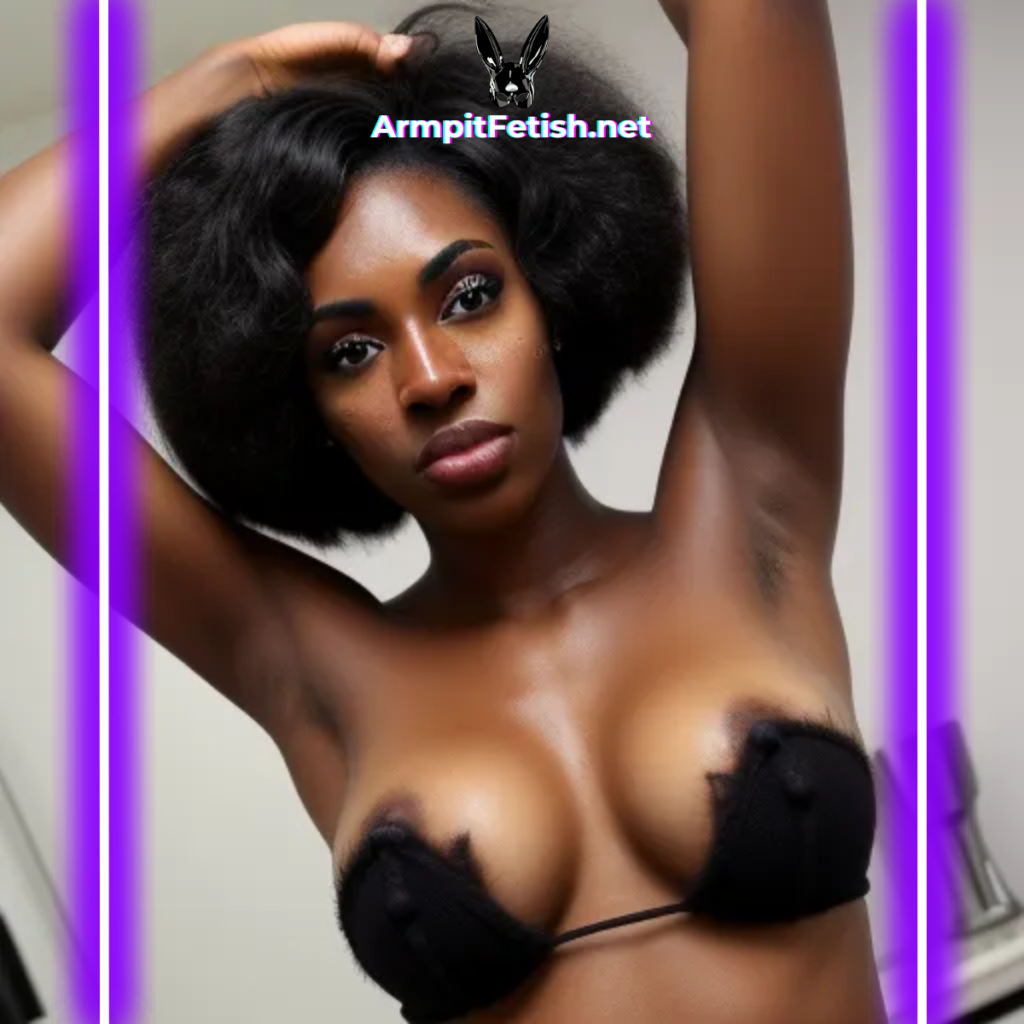The Subtle Power of the Celebrity Armpit in Classic Hollywood
In the formative years of Hollywood, modesty was the prevailing norm both on and off the screen. The 1920s ushered in the era of flapper fashion, characterized by sleeveless dresses that led many women to start shaving their underarms to align with emerging beauty standards. By the 1930s and 1940s, during the Golden Age of Hollywood, a hair-free underarm became synonymous with feminine grooming and purity. This was a time when studios meticulously managed actresses’ images to exude glamour and adhere to the “correct standards of life,” as dictated by the Motion Picture Production Code, also known as the Hays Code. Learn more about the Hays Code here.
- Strict Censorship: Enforced from 1934 to 1968, the Hays Code prohibited overt displays of sexuality. Elements like “nudity,” “suggestive dances,” and any hint of eroticism were strictly censored. Consequently, the notion of focusing on a woman’s armpit as a sensual body part was unthinkable during this era.
- Symbolic Roles: Despite these restrictions, the armpit held subtle symbolic roles. Musical films and pin-up photography often featured starlets with arms gracefully lifted, highlighting the underarm in a demure manner. These scenes aimed to showcase a woman’s elegance or the drape of a gown, rather than explicit sexuality.
- Idealized Femininity: Actresses of the Golden Age were portrayed as pristine and smooth, aligning with the era’s ideal that proper women should remove “reminders of our animal nature” like body hair. Heroines might glisten, but they did not visibly perspire or display “unlady-like” stubble.
Interestingly, one international star dared to challenge these norms: Sophia Loren. In the 1950s, Loren occasionally appeared in publicity photos with natural underarm hair, a bold choice at a time when most Hollywood starlets adhered to strict grooming standards. Her confidence in displaying her natural underarms suggested that a woman could remain elegant and sexy without conforming to societal expectations. Read more about Sophia Loren’s iconic photoshoots here.
In Europe, such an image was less taboo, but in America, it stood out. Loren’s choice foreshadowed later feminist attitudes, as noted in retrospectives that praised her ability to “do sexy with hairy armpits.” Yet, during the Golden Age, she remained an exception. For the majority of Hollywood’s early cinema, armpits were kept within the realm of decorum—either hidden under sleeves or displayed in their most sanitized, hairless form, symbolizing the polished virtue expected of women on and off the screen.

The Sexual Revolution and the Armpit Fetish: 1960s–1970s
The 1960s ushered in a transformative era, marked by the Sexual Revolution and a significant shift in cultural depictions of the human body. During this time, Hollywood began to relax its stringent Production Code, eventually replacing it with the more flexible ratings system in 1968. This change allowed filmmakers to explore more daring themes and showcase more skin, including the once-taboo armpit. As the decade progressed, the armpit, along with other body parts like shoulders and midriffs, became more visible on screen, reflecting broader societal changes.
Hollywood’s Embrace of the Underarm
With the newfound freedom, Hollywood costume designers embraced bolder styles. Bikinis, halter tops, and sleeveless mini-dresses became commonplace in films, allowing audiences to see underarms more frequently. Although these underarms were typically clean-shaven, the very act of exposing them marked a departure from previous norms. Women lifting their arms on screen could now convey flirtation or sensuality, a subtle yet significant shift in how female bodies were portrayed.
Iconic sex symbols of the era, such as Raquel Welch, played a pivotal role in this transformation. Welch’s appearance in the 1966 film One Million Years B.C. featured her in a fur bikini, showcasing her limbs and armpits. The film’s poster, depicting Welch confidently posed, became a defining image of the 1960s, symbolizing the era’s evolving attitudes toward female sexuality. Discover more about Raquel Welch’s iconic image here.
Challenging Beauty Standards
As the 1970s dawned, the feminist movement gained momentum, challenging traditional beauty standards, including the expectation of hairless female bodies. Second-wave feminists argued against obligatory hair removal, viewing it as an oppressive beauty ritual. The 1968 Miss America protest, where demonstrators discarded razors and other beauty products into a “Freedom Trash Can,” epitomized this resistance. Learn more about the 1968 Miss America protest here.
While mainstream Hollywood films of the 1970s continued to favor hairless underarms, some counterculture and art-house films began to depict more natural female characters. This shift reflected a growing awareness of and resistance to societal norms, even if mainstream cinema remained largely unchanged in its portrayal of women.
The Armpit as a Symbol of Liberation
By the late 1970s, the sexual framing of armpits had evolved. The iconic poster of Farrah Fawcett in a red swimsuit, with her arm raised overhead, became a cultural phenomenon. Selling over 12 million copies, it highlighted how the armpit had become a normalized aspect of beauty and sex appeal. While not explicitly fetishized, the pose signified a broader acceptance of the armpit as part of a woman’s allure. Read more about Farrah Fawcett’s iconic poster here.
Even in underground cinema, armpit fetishism began to surface. The 1972 film Pink Flamingos included a controversial scene that acknowledged armpit eroticism, albeit in a shocking manner. While such depictions remained rare in mainstream films, they indicated a growing recognition of the armpit’s potential as a site of sexual interest.
Overall, the 1960s and 1970s witnessed a transformation in the depiction of armpits, from symbols of modesty to subtle signifiers of liberation and sex appeal. As women raised their arms on screen, they also raised new discussions about body autonomy and the evolving standards of beauty.

The 1980s: Action Heroes and Armpits as Symbols of Power
The 1980s marked a transformative era in cinema, particularly with the rise of the tough action heroine. This period saw a departure from the passive damsels of previous decades, introducing characters who were not afraid to sweat, bleed, and fight. In this context, armpits took on a new symbolic role, representing strength and empowerment.
Iconic Action Heroines and Their Impact
Actresses like Sigourney Weaver and Linda Hamilton became icons by portraying physically strong, empowered women. These characters, such as Ellen Ripley in Aliens (1986) and Sarah Connor in Terminator 2 (1991), showcased their armpits in moments of intense action rather than coy posing. This visibility of underarms was novel, signaling that a woman on screen could be formidable and capable.
- Sigourney Weaver: As Ellen Ripley, she wielded a flamethrower in a sweat-stained muscle tee, her armpits visible as a testament to her combat readiness.
- Linda Hamilton: Her portrayal of Sarah Connor included relentless pull-ups, with her chiseled arms underscoring her strength and determination.
Many cultures have explored the appeal of armpit worship. Read more here.
Beauty Standards and Realism
Despite the rugged scenarios these heroines endured, Hollywood clung to certain beauty conventions. Female stars, even in battle, sported smooth underarms. This realism-versus-idealism conflict was noted by critics, highlighting how our interest in cinematic realism only went so far. The unwritten rule persisted: a heroine could be tough, yet she would remain well-groomed by patriarchal beauty standards.
Interestingly, a BuzzFeed survey catalogued how female characters, from Katniss Everdeen to The Walking Dead’s Carol, miraculously stayed hairless through dystopias and disasters. This underscores the ongoing tension between power and beauty norms.
Celebration of Strength
The emphasis in the ’80s was less on sexiness and more on power. When Grace Jones swung a sword in Conan the Destroyer (1984) or Sigourney Weaver rolled up her sleeves, their exposed underarms projected ferocity. Magazine spreads and posters celebrated these muscles, with Linda Hamilton’s flexed biceps becoming poster-worthy around 1991, dubbed the “guns” of Sarah Connor.
In these images, the underarm was not fetishized by the camera; rather, its visibility was a visual underscore to the actress’s physical conditioning and strength. This era also introduced more female athletes and warriors in film, reinforcing that an uncovered armpit could signify confidence and autonomy.
Watch this NSFW Armpit Porn movie, its not just Hollywood but the Asians too.
Armpits in Comedy and Beyond
The late ’80s saw humorous nods to armpit appeal. In the 1987 rom-com Broadcast News, Holly Hunter’s character jokingly blow-dries her underarms to prevent sweat marks before going on TV. This relatable moment earned a laugh while highlighting the pressure women felt to appear perfectly put-together.
By the end of the 1980s, showing a woman’s armpits on screen could mean she was sexy, strong, nervous, or liberated, depending on the context. The underarm had completed a journey from invisible to indispensable, reflecting how much attitudes had broadened since the days of mandatory sleeves.

The 1990s: The Rise of the Action Heroine and Early Internet Fetishism
The 1990s marked a transformative era in cinema, particularly with the emergence of the action heroine. This decade saw women taking center stage in action and sci-fi films, showcasing their strength and prowess. As these characters dominated the screen, the sight of female underarms became a common and powerful symbol of empowerment. Angelina Jolie epitomized this trend with her roles in films like Gia (1998) and Lara Croft: Tomb Raider (2001). Her characters, often clad in sleeveless outfits, exuded confidence and defied traditional gender norms.
Empowerment Through Visibility
Jolie’s portrayal of strong, independent women resonated with audiences. Her shaven yet prominently displayed armpits suggested a woman who was comfortable in her own skin, breaking away from conventional dress codes. Similarly, Michelle Rodriguez made her mark with Girlfight (2000), where she played a boxer. Her character’s sweaty, exposed armpits highlighted the authenticity and rawness of female strength in a male-dominated sport.
- Normalizing Female Armpits: By the late ’90s, it became common to see female characters in action scenes, with armpits visible during moments of exertion.
- Breaking Stereotypes: These portrayals helped dismantle stereotypes, presenting women as both physically powerful and unapologetically feminine.
The Internet’s Role in Fetishism
While cinema was normalizing female armpits, the internet was quietly revolutionizing how niche interests were shared. The 1990s saw the rise of online communities where armpit fetishism found a voice. Fans and fetishists could now connect globally, discussing their interests in forums and chat rooms. Usenet groups and Geocities pages became hubs for sharing celebrity armpit photos and movie stills, fostering a sense of community among enthusiasts.
Hollywood began to acknowledge this growing subculture. In David O. Russell’s 1996 comedy Flirting with Disaster, a subplot humorously explored a character’s armpit fetish. This marked one of the first times maschalagnia, or armpit fetishism, was depicted in mainstream media, albeit in a comedic context.
Cultural Shifts and Fashion
The ’90s also witnessed a shift in fashion, with supermodels and pop stars embracing more revealing styles. Icons like Madonna, Janet Jackson, and the Spice Girls frequently wore outfits that highlighted their arms, influencing fashion trends and further normalizing the visibility of underarms. This cultural shift culminated in a significant moment when Julia Roberts attended the Notting Hill premiere with unshaven armpits. Her decision, whether intentional or not, sparked discussions about beauty norms and feminist choices. Read more about Julia Roberts’ red carpet moment here.
As the decade closed, the female armpit had become a symbol of empowerment in visual media, while also serving as a point of fascination for niche communities online. The ’90s set the stage for the 21st century, where evolving views on gender and body positivity would continue to shape the conversation around armpits and their cultural significance.

The 2000s: Modern Depictions and Subversive Portrayals of Armpit Fetishism
The early 2000s marked a pivotal era for armpit fetishism and its portrayal in popular culture. This decade was characterized by a blend of traditional beauty standards and emerging subversive trends. On one hand, Hollywood continued to showcase hairless, “perfect” underarms on female stars. On the other, some celebrities and filmmakers began challenging these norms, sparking discussions about beauty and personal expression.
Iconic Moments and Celebrity Influence
A significant moment came in 2000 when Julia Roberts made headlines for her visible underarm hair at a London red carpet event. This moment, often cited as a turning point, encouraged women to embrace their natural bodies. Although Roberts later clarified it was an unintended wardrobe choice, the impact was profound. It inspired other celebrities, such as Britney Spears and Drew Barrymore, to occasionally appear with underarm stubble, reigniting debates on whether women should shave.
- Julia Roberts’ Red Carpet Moment: Her unintentional display of underarm hair became a cultural milestone.
- Celebrity Influence: Stars like Britney Spears and Drew Barrymore followed suit, sparking public discourse.
Film and Media’s Role
In the realm of film, the 2000s saw a subtle shift. While mainstream media maintained the hairless ideal, indie films began to portray characters with natural underarms to emphasize authenticity. For instance, Asia Argento’s character in “The Heart Is Deceitful Above All Things” sported unshaven underarms to reflect a gritty lifestyle. Such portrayals were rare but significant, as they challenged traditional beauty norms.
Moreover, the rise of social media and digital imagery in the 2000s magnified every detail of a celebrity’s appearance. This led to viral moments like “#armpitgate,” where fans scrutinized Beyoncé’s underarm stubble at the 2005 Academy Awards. This hyper-focus highlighted society’s obsession with perfection, yet also paved the way for more open discussions about body hair.
The Rise of Online Communities and Feminist Dialogues
The internet played a crucial role in the 2000s, providing platforms for niche interests and fetish communities. Online forums and message boards allowed enthusiasts to share and discuss armpit-focused content, fostering a sense of community. Compilation videos and high-definition screencaps became popular, catering to those with a particular interest in celebrity underarms.
Simultaneously, the feminist movement gained momentum, advocating for women’s autonomy over their bodies. Magazines began featuring photoshoots of models with body hair, challenging outdated beauty standards. In 2008, Juliette Lewis made a statement by appearing on the red carpet with unshaven armpits, tying into her role as a rebellious roller-derby punk. This act emphasized that shaving is a choice, not an obligation.
By the end of the decade, mainstream brands and media began embracing empowerment messaging around body hair. The 2000s set the stage for the full-on body hair debates and gender-fluid expressions that would characterize the 2010s, marking a significant shift in cultural perceptions of armpit fetishism and beauty standards.

The 2010s: Gender Fluidity in Hollywood
During the 2010s, gender fluidity began to significantly influence Hollywood and broader cultural conversations. This decade marked a pivotal shift as more celebrities embraced non-binary and gender non-conforming identities. Films and TV shows increasingly featured LGBTQ+ characters, challenging traditional masculine and feminine roles. In this evolving landscape, the armpit emerged as a surprising yet powerful symbol of change.
Challenging Gender Norms Through Body Hair
Society has long dictated that men “should” be hairy while women “should” be hairless. This binary view of body hair became a focal point for challenging gender norms. Female and male stars began to defy these expectations, using their armpits as a canvas for self-expression. For example, actress and musician Janelle Monáe, known for her gender-fluid style, proudly displayed her underarm hair, reinforcing her message of autonomy.
- Paris Jackson’s Statement: In 2017, Paris Jackson, daughter of Michael Jackson, made headlines by unapologetically showcasing her unshaven armpits at public events. She responded to critics by emphasizing that it’s natural and she likes it.
- Indie Film Representation: In the indie film “American Honey” (2016), Sasha Lane’s character, a free-spirited drifter, was portrayed with natural body hair. Director Andrea Arnold aimed for authenticity, and Lane’s refusal to conform added depth to her character.
Many cultures have explored the appeal of armpit worship. Read more here.
Television’s Role in Normalizing Body Hair
Television also played a significant role in normalizing diverse grooming habits. The Netflix series Orange Is the New Black, set in a women’s prison, depicted characters with body hair, contributing to its gritty realism. This portrayal helped audiences view body hair as a natural aspect of identity rather than a shocking anomaly.
Fashion and Music’s Impact
The fashion and music industries further propelled the conversation. Miley Cyrus, who came out as gender-fluid in the 2010s, embraced her body hair publicly. In 2015, she dyed her armpit hair bright pink and shared it on social media. For Miley, it was a blend of shock art, political statement, and fun. She challenged double standards by asking, “If men aren’t expected to shave, why should women?”
- Queer Community Support: Many queer women and non-binary individuals rallied around such gestures. Colorful armpit hair became a brief fad, with hashtags like #freeyourpits gaining popularity.

Male Grooming and Gender Expression
Even men began rethinking armpit grooming. Traditionally, men could go hairy without comment, but the 2010s saw a rise in male grooming and “manscaping.” Some male actors, especially those in superhero roles, removed body hair for a smooth, muscled look. Conversely, actor Ezra Miller, who identifies as non-binary, often played with gender in photoshoots, sporting long, unkempt underarm hair in femme clothing.
By the end of the decade, the armpit had transformed into a symbol of empowerment. It set the stage for explicit feminist dialogues about body hair and beauty, emphasizing personal preference and political statement over societal scandal.
Check out this Armpit Porn NSFW threesome
Body Hair and Feminism: From Protest to Empowerment
Over the past century, the intersection of body hair and feminism has evolved significantly, with the female armpit serving as a powerful symbol of this transformation. Historically, society dictated that women should adhere to strict beauty standards, including the removal of armpit hair. However, feminist movements have challenged these norms, turning what was once a symbol of shame into one of pride and empowerment.
The Roots of Rebellion: 1960s and 1970s
In the late 1960s, second-wave feminists began to rebel against enforced beauty rituals. They critiqued the notion that women must shave to be deemed acceptable. A pivotal moment occurred in 1968 when feminists famously tossed razors during a protest, symbolizing their rejection of sexist standards. Although this act was bold, few women adopted the practice of forgoing razors in daily life due to high social costs and the lack of representation in mainstream media.
Cultural Renegades and the Punk Movement
By the 1970s and 1980s, cultural figures like Janis Joplin and Brigitte Bardot began embracing armpit hair as an act of defiance. These individuals, though considered fringe examples, paved the way for future movements. The 1990s saw the rise of the Riot Grrrl punk subculture, where young women proudly displayed their body hair as a rejection of patriarchal beauty norms. Despite this, mainstream culture continued to label these women as “alternative.”
The 2010s: Social Media and Mainstream Acceptance
It wasn’t until the 2010s that armpit hair became a mainstream feminist talking point. Social media platforms played a crucial role in this shift. Campaigns like #Januhairy and #ArmpitHairDontCare encouraged women to embrace their natural body hair. Women began posting selfies with unshaven armpits, often accompanied by messages of self-love and rejection of the male gaze.
- Celebrity Influence: Figures like Madonna and Emily Ratajkowski used their platforms to promote body hair as a form of agency and choice.
- Media Representation: TV shows like “Girls” depicted unshaven armpits as normal, challenging outdated stereotypes.
Want to learn about the history of armpit fetishim? Read more here.
Challenging Beauty Standards and Embracing Diversity
The feminist movement’s embrace of armpit hair also challenged the broader notion that women’s bodies exist solely for others’ pleasure. By choosing to grow out their armpit hair, women asserted their autonomy and independence from traditional beauty standards. This movement dovetailed with campaigns against Photoshopped images, pushing for more realistic portrayals of women in media.
In 2018, a major razor brand featured a model with visible body hair in an advertisement, marking a radical shift in industry norms. Hollywood actresses joining this trend declared independence from the beauty industry’s tyranny. When Scout Willis attended a gallery opening with unshaven underarms, the media frenzy highlighted society’s absurd fixation on women’s grooming.
Feminism and Armpit Fetishism
The feminist reclamation of the armpit has also created a safer space for those with armpit fetishes to express their preferences. As body positivity flourished, the shame around appreciating natural female body parts diminished. Online communities discussing maschalagnia grew, often overlapping with feminist and queer communities that celebrate all aspects of the body.
By the end of the 2010s, armpit hair had transitioned from a feminist symbol to a non-issue for many, embodying the feminist ideal that a woman’s choice to shave or not should be personal, not a defining trait. The journey of the armpit in feminism illustrates how a small patch of body hair can have significant implications for autonomy and equality. It has been a long fight, but at last, the armpit is (almost) free.

The Digital Age: Social Media and Armpit Fetish Culture
In today’s digital landscape, social media platforms serve as vibrant hubs for niche interests, allowing communities to flourish like never before. Among these communities, armpit fetishism has emerged from the shadows, finding a prominent place in the online zeitgeist. This cultural shift is often fueled by celebrity interactions and internet humor, making what was once an underground quirk a mainstream topic of discussion.
Celebrity Influence and Online Communities
One striking example of this phenomenon is the dedicated subreddit for Taylor Swift’s armpits. Fans share concert photos and candid shots, turning her frequent arm-raising gestures into a fetish object. This illustrates how the internet can transform repeated images into objects of fascination. As noted by The Guardian, Swift’s penchant for raising her arms has inadvertently made her an “armpit muse” for some.
Social media platforms like Instagram and TikTok further demystify fetish communities. Hashtags such as #armpitfetish or #maschalagnia lead users to a plethora of content, ranging from playful memes to serious discussions. The once-private kink is now part of the meme economy, with TikTok users jokingly saying, “Normalize armpit fetishes. That’s just my two scents.”
Celebrity Endorsements and Mainstream Acceptance
Some celebrities have knowingly embraced these unconventional attractions. Kristen Stewart, for example, once mentioned in an interview her enjoyment of her partner’s natural scent, including armpit licking. This revelation sparked online buzz, validating maschalagnia and bringing it into mainstream conversation. Similarly, singer Kesha’s playful comments about fan interactions and strange turn-ons highlight how celebrities embrace odd kinks as part of their brand.
Read more about how Armpit JOI has been trending as a Google Search Term
The advent of platforms like OnlyFans has allowed celebrities and influencers to monetize these niches directly. Some offer custom content focusing on armpits, blurring the line between mainstream celebrity and niche internet micro-celebrity. Influencers often capitalize on body positivity and fetish content, attracting diverse audiences to their pages.
The Memeification and Cultural Integration of Armpits
Internet culture has a knack for turning obscure topics into viral jokes. Twitter users engage in humorous polls about “Which Avenger has the sexiest armpits?” while pop culture websites create listicles like “10 Times Female Celebs Rocked Hairy Armpits and Broke the Internet.” By presenting these topics humorously, they become accessible and shareable, further integrating them into mainstream culture.
The result of this digital churn is a normalization of armpit fetish content. Armpits, once taboo, have become trending topics. As a result, they are now part of the cultural wallpaper, appearing alongside political updates and vacation photos in social media feeds. This ubiquity has normalized fetish content to a degree, making armpits just another aspect of celebrity culture.
For enthusiasts, the internet offers endless photos, forums, and even specialty pornography catering to armpit-related interests. For the average person, the digital climate has made armpits a part of celebrity culture to watch. Influencers promote armpit care routines as part of self-care, inadvertently making people pay more attention to their pits.
In essence, the digital age has transformed armpit fetishism from an underground interest into a mainstream cultural phenomenon. Armpits have become symbols of personal freedom, subjects of erotic fascination, and content for humor and monetization. This heady mix of humor, acceptance, and entrepreneurial spirit could only exist in the 21st century’s wild web.

Cultural and Symbolic Evolution of Armpits in Hollywood
The journey of the armpit in Hollywood cinema and popular culture is a fascinating narrative of changing social mores. This evolution reflects broader societal shifts in attitudes toward gender, sexuality, and personal expression. Initially, in the early 20th century, the underarm was hidden and sanitized to uphold an image of female virtue. This modesty requirement reflected the strict moral codes of the time, where female bodies were policed and controlled.
From Modesty to Sexual Symbolism
By the mid-20th century, the armpit began to take on a new role as a site of sexual symbolism. Pin-up poses and liberated costumes quietly sexualized the underarm, aligning with the era’s growing sexual openness. Hollywood played a significant role in this transformation, as actresses began to appear on screen with more skin exposed, including their armpits. This shift was not just about aesthetics but also about challenging traditional norms and embracing a more liberated view of female sexuality.
Empowerment and Political Statements
As the feminist movement gained momentum, the armpit became a powerful symbol of empowerment and realism. Strong heroines and everyday women alike claimed space on screen, with visible armpits serving as a matter of authenticity. Through a feminist lens, the armpit turned into a political statement, challenging societal norms and questioning who gets to decide what women do with their bodies. This period saw women in Hollywood using their platform to advocate for body autonomy and challenge the beauty standards imposed on them.
The Digital Era and Cultural Currency
In the digital era, the armpit has become a form of cultural currency. Online communities and social media platforms have spawned trends and conversations that blur the line between mainstream and fetish. The depiction of armpits in Hollywood continues to reflect our evolving attitudes toward gender and sexuality. An actress lifting her arms on screen can symbolize confidence, realism, or even a playful nod to fans who appreciate the sensuality of the moment.
- Freedom and Defiance: A star going unshaven at a premiere can ignite discussions about freedom and defiance against traditional norms.
- Body Positivity: The acceptance of armpit hair on screen highlights society’s path toward greater body positivity and inclusivity.
- Fan Culture: Those who find armpits erotic are now part of the conversation, embraced by fan culture.
Today, evolution in Hollywood Celebrity Armpits mirrors society’s journey toward empowerment and acceptance. What was once policed by censorship boards is now largely a non-issue. Women in Hollywood have more freedom to decide how they present themselves, and audiences have become more accepting of deviations from the old norm. A hairy armpit on screen no longer causes a moral panic; instead, it can be celebrated as bold or authentic. This evolution proves that even the smallest details, like an armpit, can carry significant symbolism in our cultural narrative.

Conclusion: The Cultural Journey of Armpit Fetishism in Media
In today’s world, the acceptance of diverse body types and features, including armpits in their various states—shaved, unshaved, perfumed, or naturally scented—reflects a significant cultural shift. This evolution is not only a triumph for those who appreciate the armpit fetish but also for anyone who has ever felt self-conscious about their appearance. As society progresses, it becomes evident that even the most arbitrary beauty standards can transform over time.
Key Takeaways
- Historical Evolution: The armpit has transitioned from a forbidden sight to a symbol of rebellion and empowerment in media.
- Symbol of Change: It represents broader societal shifts in who gets to be seen and how they are perceived.
- Media Influence: From classic films to modern blockbusters, armpits have been both fetishized and celebrated, reflecting changing attitudes.
The armpit’s journey in Hollywood is a tale of liberation. It symbolizes the liberation of a body part from taboo, the liberation of women from arbitrary beauty norms, and the liberation of desire from unnecessary shame. This evolution demonstrates that even seemingly minor aspects of cinema can mirror profound social changes.
As we look to the future, we anticipate new trends—perhaps a resurgence of rainbow armpit hair or CGI armpits that never sweat. Whatever the next era brings, Hollywood Celebrity Armpits and its audience will undoubtedly continue this dialogue. This ongoing conversation highlights how even the smallest details in a film can resonate with the broader societal pulse.
Ultimately, the armpit remains a powerful symbol of desire and cultural evolution, proving that nothing in culture is too small to matter.





